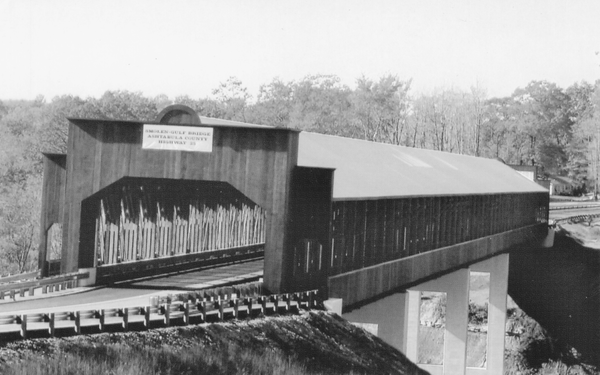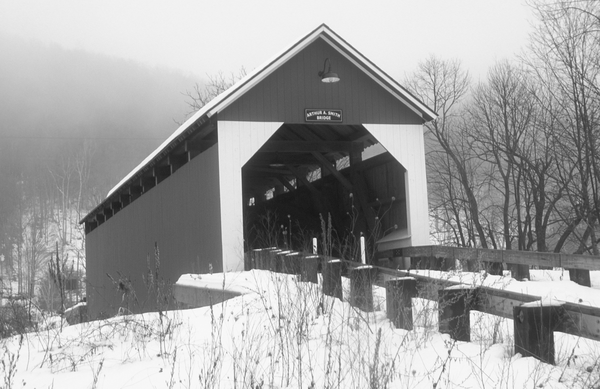Sometimes called “kissing bridges,” covered bridges can be found in over half of the United States, providing protection to pedestrians and vehicles alike. These bridges have a long history in America, and many are listed within the National Register for Historic Places. Read on to learn more about these iconic bridges, and to see some of our favorites still standing today!
So what is a “covered bridge?”
In its most basic form, a covered bridge is a timber-truss bridge that has both a roof and siding. This roof and siding can create either a completely enclosed, or almost enclosed structure. The “truss” in a truss bridge refers to the architectural design of the bridge’s support beams – trusses typically form a series of triangles to provide support to a structure. There are at least eight different types that have been historically used in bridge construction.

While popular folklore may refer to many of these bridges as “kissing bridges” for their reputation as a rendezvous point for young sweethearts, most covered bridges were built with a much simpler purpose: to protect the wooden bridge beneath from the elements. A typical wooden bridge will only survive 10-15 years if not covered. Before the advent of iron and steel, it was vital to protect bridges from damage, so that they could extend the life of what was a typically expensive bridge.
Covered bridges were especially popular in America prior to the steel revolution, and some states had over 1,000 covered bridges at their peak. However, these numbers have significantly reduced, as many were either replaced after the creation of steel bridges in the late 19th century, or have simply deteriorated due to their age. Those that have survived have found themselves as National Historic Sites, visited by thousands of fans yearly.
Our Favorite Fun Facts about Covered Bridges
While they may seem simple, there’s plenty of fun trivia about covered bridges in America:
- Land of the Most Covered Bridges: Although Pennsylvania was the leader of the steel revolution, it seems that they thought steel bridges should only be used in other states. Covered bridges were built long after the advent of iron in the Keystone State, and today Pennsylvania has the most covered bridges in the country, with about 219 still in existence.
- A Covered Bridge Festival: For the covered bridge enthusiasts, Parke County, Indiana hosts a yearly fall festival called the Parke County Covered Bridge Festival. The festival celebrates the county’s 31 covered bridges, the most of any county in the United States. The festival is extremely popular, with over 2 million attendees each year!

- The Longest Covered Bridge in the World: While Pennsylvania may have the most covered bridges, California has one of the longest in the world. The Bridgeport Covered bridge is the longest clear span bridge in the world, measuring at 233 feet long. Built in 1862, the state set aside $1.3 million USD in 2014 to restore the bridge in two phases. It was registered on the National Register of Historic Places in 1971.
- The Bridges of the Entertainment World: Covered bridges are featured in several American books and movies, most notably The Bridges of Madison County, where historic covered bridges serve as the main setting and focal point of the story. A covered bridge is also the main setting for Edgar Allan Poe’s “Never Bet the Devil Your Head,” where a man is gruesomely beheaded.
- The Oldest Covered Bridge in America: The distinction of oldest covered bridge in the US goes to Hyde Hall Bridge, located in Glimmerglass State Park, New York. Built in 1825, the bridge was originally located on private property within the Hyde Hall estate. It was listed on the National Register of Historic Places in 1998, and was last renovated in 1967.
A Gallery of Covered Bridges
With so many covered bridges throughout the county, we’ve gathered some of our favorites here to share with you!




